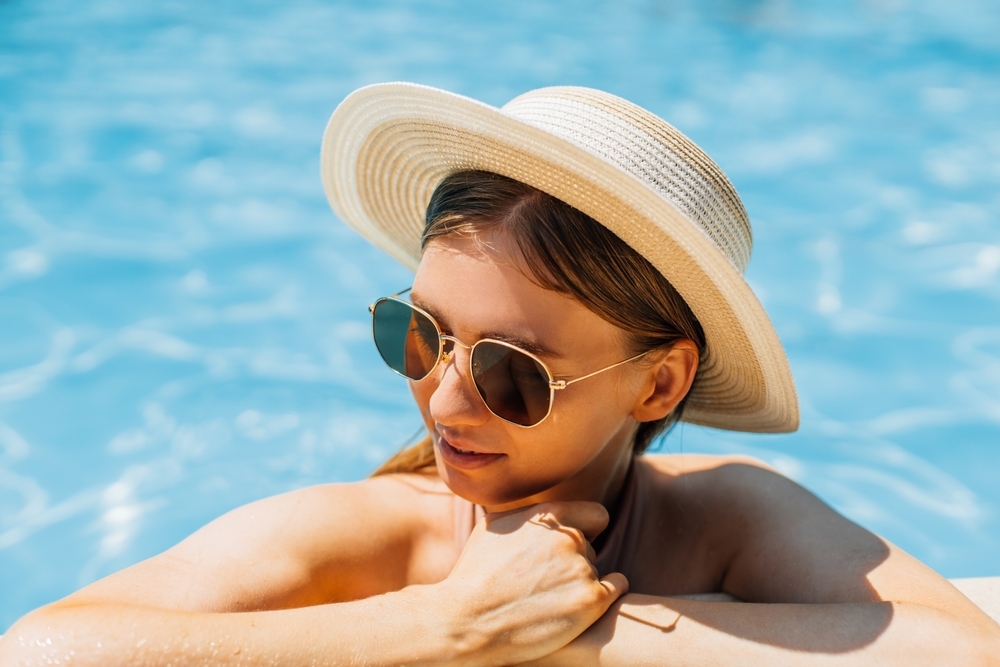When applying sunscreen before a day out in the sun, you might focus on your face, arms, and legs. But some commonly missed areas are just as exposed to the sun—and the skin on your head (also known as your scalp) is one of them.
The sun shines down directly on the top of your head, so it makes sense that your scalp is prone to sunburn. Discover how to prevent sunburn on your scalp to keep your noggin protected and reduce your risk of sun-related skin damage in places that may be out of sight—but shouldn't be out of mind.
Risk Factors for Scalp Sunburns
Anyone can get a scalp sunburn under certain conditions, but some people are at greater risk. Your hair provides a protective barrier between your scalp and the sun's ultraviolet (UV) rays, including both UVA and UVB rays. Your hair color, type, and thickness all impact how strong that layer of protection is.
Hair Color
Those with lighter hair colors, like blonde or red hair, are generally at greater risk of sunburn all around, including scalp sunburns. This is due to lower levels of melanin, a natural pigment that absorbs and scatters UV rays.
Hair Type
Research shows that curly hair offers some sun protection, and scientists believe that humans developed curly hair types to help stay cool. Curly hair tends to be denser, thereby offering more sun protection than straight hair types, for example.
Hair Thickness
The American Academy of Dermatology (AAD) notes that people with thinning hair should be particularly mindful of sun exposure. For example, research shows that bald men are at increased risk of skin cancer of the scalp. Shaved and bald heads have the lowest amount of natural sun protection and are therefore the most at risk for sun damage.
Symptoms of a Sunburned Scalp
Sunburn symptoms are similar regardless of where they occur on the body. According to John Hopkins Medicine, sunburn symptoms can include:
- Redness
- Swelling
- Blisters
- Pain
- Dryness
- Itching
- Peeling
In some cases, symptoms can also include headaches, fever, chills, confusion, and dehydration. If you suspect a severe case of sunburn or sun poisoning, call your doctor right away.
How to Prevent Sunburn on Your Scalp
As with any type of sun damage, prevention is key, and the best way to prevent sunburn is to use sunscreen and wear protective clothing.
How to Put Sunscreen on Your Scalp
Putting sunscreen on your scalp may sound odd, but rest assured it won't harm your hair. EltaMD UV Sheer Broad-Spectrum 50+ is a great option for strong protection that won't leave behind a white cast.
When applying sunscreen to your scalp, focus on the areas with the least amount of coverage. For people with bald or shaved heads, this means all over; for those with hair, it means directly on your part and in any thinning areas. Gently dab the sunscreen into your scalp with your fingers or apply it with a squeeze bottle with a thin applicator tip.
Other Strategies for Protection
Seeking shade can also help. The sun is at its strongest between the hours of 10 a.m. and 4 p.m., so try to avoid direct sunlight during this window by staying inside or in shaded areas (yes, even in the winter!).
You can also use clothing and accessories to your advantage. Certain types of hats and umbrellas offer a degree of protection. Baseball caps may shield your forehead, but they leave the neck and ears exposed, so opt for a tightly woven wide-brimmed hat. An umbrella can also create a barrier between the sun and your scalp, though research shows it's less effective than sunscreen.
Your best bet is a combination of the above: seek shade, use sunscreen, wear a hat, and use an umbrella.
Quick Tips to Treat a Sunburned Scalp
The importance of adequate sun protection is often most obvious after you get a sunburn. If you're dealing with a burned scalp, the AAD suggests the following tips to soothe a sunburn:
- Get out of the sun immediately and stay indoors as much as possible. If you have to go outside, wear a tightly woven hat.
- Take cool showers to soothe discomfort and moisturize the area to keep it hydrated.
- If you have swelling, redness, or discomfort, take an over-the-counter anti-inflammatory and pain reliever.
- Stay hydrated. Sunburns can lead to dehydration, so drink extra water.
- Avoid showering with hot water and blow drying your hair (or other heat styling tools).
As if a red, painful scalp wasn't enough, the Skin Cancer Foundation explains that repeated sunburns increase your risk of skin cancer. Your scalp is exposed to sunlight more than most other parts of your body, so protecting it from sun damage shouldn't be an afterthought. When you think head-to-toe sun protection, you can enjoy the best parts of the sunny outdoors—and ditch the rest.
